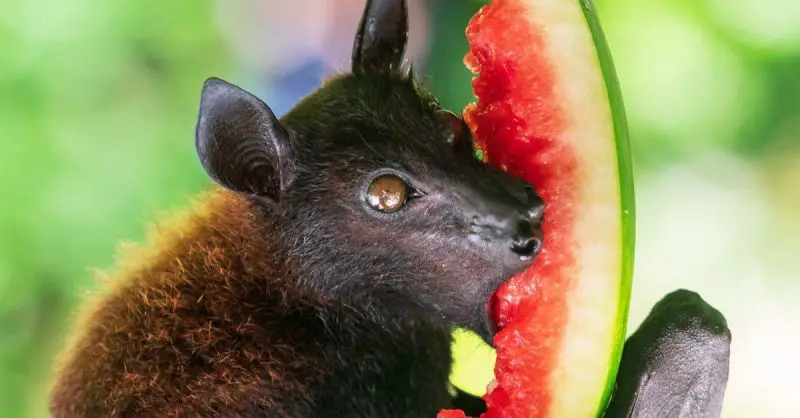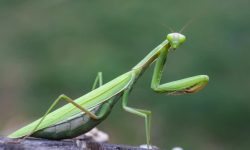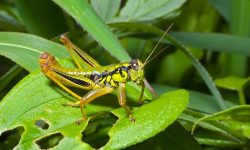Bats are among the most misunderstood creatures in the animal kingdom. While many people associate them with spooky legends or vampire tales, these nocturnal mammals play a vital role in maintaining ecosystem balance. One of the most fascinating aspects of bats is their diet. But what do bats actually eat?
The answer depends on the species — and with over 1,400 species of bats worldwide, their eating habits vary widely. Some feast on insects, others sip nectar like hummingbirds, while a few even enjoy fruit or fish. Each bat species has evolved unique adaptations that help them find and consume food efficiently while flying through the night.
In this guide, we’ll explore 20 foods bats love the most, grouped by their dietary preferences — insect-eating, fruit-eating, nectar-feeding, fish-eating, and even blood-feeding species. You’ll also learn how their diet keeps them healthy, strong, and essential to our planet’s ecosystems.
Understanding Bat Diets

Bats Are Not All the Same
Bats are divided into two main groups based on their diet:
-
Microbats, which primarily eat insects, small animals, or fish.
-
Megabats, also known as flying foxes, which feed mainly on fruit and nectar.
Each group has specialized teeth, tongues, and flight styles adapted for their food sources. For example, insectivorous bats have sharp teeth for crunching exoskeletons, while fruit bats have long tongues designed to lap up juices.
Why Diet Matters for Bats
A bat’s diet is directly tied to its role in the environment. Insect-eating bats control pest populations that threaten crops. Fruit and nectar-feeding bats pollinate plants and spread seeds, helping forests regenerate. Without bats, ecosystems — and even agriculture — would suffer.
20 Foods That Keep Bats Flying Strong
1. Mosquitoes
Mosquitoes are one of the most common foods for insectivorous bats. A single bat can eat thousands of mosquitoes in one night, significantly reducing pest populations.
These tiny insects are rich in protein, which provides essential energy for flight. Their abundance makes them an easy and reliable food source for small bat species like the little brown bat.
Bats hunt mosquitoes using echolocation, detecting the faint flutter of wings in the dark.
2. Moths
Moths are another favorite among night-hunting bats. Their large size and soft bodies make them nutritious and easy to digest.
Some moth species have evolved the ability to detect bat sonar and evade capture, leading to an evolutionary “arms race” between predator and prey. Larger bats like the brown long-eared bat are particularly skilled at hunting moths.
The high protein content in moths helps bats maintain their flight muscles and produce milk for their pups.
3. Beetles
Beetles make up a major part of the diet for many microbat species. They’re packed with protein and fats, which are vital for energy storage, especially before hibernation.
Bats that eat beetles have strong jaws and teeth capable of crunching through hard shells. These include species like the greater horseshoe bat and the big brown bat.
While beetles require more effort to catch, their nutritional payoff is worth it — providing sustained energy for long flight hours.
4. Flies
Flies are abundant and easy prey, making them a staple in many bats’ diets. Bats use echolocation to track their quick, erratic movements through the air.
Because flies reproduce rapidly, they’re always available as a food source. This steady supply helps insectivorous bats maintain consistent energy levels throughout the year.
Eating flies also helps control disease-carrying populations, providing an ecological benefit to humans.
5. Grasshoppers and Crickets
These insects are rich in protein and minerals, making them a favorite for larger bat species. Bats usually catch grasshoppers and crickets by swooping close to the ground or over grassy areas.
Their long wings and agile flight allow them to capture even the fastest-moving prey. Crickets are especially nutritious for bats during the breeding season, when females need extra energy for nursing their young.
In tropical areas, some bats specialize in catching katydids, which sing loudly and reveal their position.
6. Caterpillars
Caterpillars are soft-bodied and full of nutrients. Bats often pick them off leaves during flight or while roosting close to vegetation.
This diet is common in forest-dwelling species that forage near tree canopies. Because caterpillars contain moisture, they help bats stay hydrated in dry environments.
Their high fat content provides sustained energy, crucial for bats migrating long distances.
7. Dragonflies
Dragonflies are swift fliers, but bats are faster and more agile. They provide excellent protein and hydration.
Catching dragonflies mid-air demonstrates the bat’s incredible flight control. Species like the Mexican free-tailed bat are known for their speed and often feed on dragonflies above water bodies.
This type of prey supports bats that travel long distances during nightly hunts.
8. Termites
During termite swarming seasons, bats take advantage of the abundance of flying termites. They feast on them in large numbers, often circling lights where termites gather.
Termites are rich in protein and easy to catch due to their slow flight. This makes them an ideal food source for smaller bats or juveniles learning to hunt.
By consuming termites, bats help limit infestations and maintain forest health.
9. Ants
Some ground-foraging bat species eat ants, particularly winged ants that emerge during mating seasons. These insects are high in protein but require sharp timing to catch.
While not a primary food, ants provide variety and nutrition for bats living near forest floors or open fields.
Ant-eating behavior is more common in tropical bats that mix aerial and terrestrial hunting.
10. Spiders
Certain bats, like the fringe-lipped bat, have adapted to snatch spiders directly from their webs. This unique hunting technique requires precision and stealth.
Spiders provide a good mix of protein and fat, and their predictable web locations make them convenient targets.
This diet demonstrates the diversity of hunting skills in different bat species.
11. Fruits
Fruit-eating bats, or frugivorous bats, such as flying foxes, love tropical fruits like bananas, figs, mangoes, and papayas. These foods are rich in natural sugars that provide instant energy.
Fruit bats chew fruit to extract juice and nutrients, then spit out the fiber and seeds. This behavior makes them essential for seed dispersal, helping forests regrow.
They prefer ripe, fragrant fruit, often feeding at night when competition from birds is low.
12. Nectar
Nectar-feeding bats are nature’s night pollinators. They have long, brush-tipped tongues to reach deep into flowers, much like hummingbirds.
Flowers from plants like agave, cactus, and banana trees provide sugary nectar that fuels their long flights. These bats also help fertilize plants by transferring pollen between blooms.
Nectar is high in glucose, giving bats an instant burst of energy.
13. Pollen
In addition to nectar, bats also consume pollen from the flowers they visit. Pollen is full of protein and amino acids, essential for muscle repair and reproduction.
When bats feed on flowers, they inadvertently collect pollen on their fur and spread it to other plants, making them vital pollinators.
This symbiotic relationship supports biodiversity in tropical and desert ecosystems.
14. Fish
Some species, such as the bulldog bat or fishing bat, have developed remarkable skills for catching fish. Using echolocation, they detect ripples on water surfaces made by fish movement.
They then swoop down, extend their sharp claws, and scoop fish out of the water mid-flight. Fish provide high protein and fat, ideal for energy-intensive flying mammals.
This diet adaptation showcases nature’s incredible versatility.
15. Frogs
Certain bats specialize in hunting small frogs, guided by their mating calls. These frog-eating bats, like the fringe-lipped bat, can distinguish between the calls of edible and toxic species — an impressive evolutionary skill.
Frogs are nutrient-dense and provide hydration, making them valuable in tropical environments.
This diet reflects how intelligent and adaptable bats are when selecting prey.
16. Small Birds
Large predatory bats, such as the spectral bat, occasionally hunt small birds. They ambush them during roosting hours or catch them mid-flight during migration.
Birds are rich in protein and provide a significant caloric boost. While rare, this predatory behavior highlights the diversity of bat diets worldwide.
Such feeding habits are typically observed in tropical forests and dense canopy environments.
17. Rodents and Small Mammals
The spectral bat and some false vampire bats prey on small rodents, mice, or other tiny mammals. They locate them using sharp hearing rather than echolocation.
This carnivorous diet is rare but important for maintaining ecosystem balance. Small mammals provide concentrated nutrients, helping these bats sustain long flights and high energy demands.
Their hunting technique is stealthy and precise, similar to owls.
18. Blood (Vampire Bats)
Only three species of bats feed on blood — the vampire bats of Central and South America. They drink small amounts of blood from livestock or wild animals without causing harm.
Their saliva contains anticoagulants that prevent clotting, allowing a smooth flow of blood during feeding. Despite their reputation, vampire bats take only what they need and rarely harm their hosts.
This unique diet demonstrates incredible evolutionary adaptation for survival.
19. Insect Larvae and Pupae
Bats also eat insect larvae and pupae found on leaves, in trees, or under bark. These immature insects are soft, protein-rich, and easy to digest.
By consuming larvae, bats help prevent pest outbreaks that could damage crops and vegetation.
This diet is especially important during spring, when insects are in developmental stages.
20. Flower Petals and Plant Juice
In some tropical regions, bats have been observed nibbling on soft flower petals and sucking plant sap. These behaviors provide hydration and nutrients during dry periods.
This supplemental feeding habit supports energy levels when other food sources are limited. It’s more common in nectar-feeding species like the lesser long-nosed bat.
Such flexibility helps bats survive environmental fluctuations throughout the year.
How Diet Affects Bat Health and Behavior
Energy and Flight Efficiency
Bats have incredibly high metabolic rates due to constant flying. Their diets — rich in protein and sugars — are perfectly tuned to sustain this energy demand. A single night’s feeding can equal half their body weight in food.
Ecosystem Impact
By consuming insects, bats reduce agricultural pests and disease vectors. Fruit and nectar-feeding bats pollinate plants and disperse seeds, playing an irreplaceable role in ecosystem renewal.
Without bats, many crops and wild plants would struggle to reproduce naturally.
Frequently Asked Questions (FAQs)
Do all bats eat insects?
No. While most bats eat insects, some species feed on fruit, nectar, fish, or even blood. Diet varies depending on habitat and evolutionary adaptation.
How much do bats eat in one night?
An average bat can eat up to 3,000 insects in a single night, depending on size and species. This helps control pests and sustain their energy for long flights.
Do bats drink water?
Yes, bats do drink water. They skim the surface of ponds or rivers while flying, taking quick sips without landing.
Are fruit bats dangerous?
Not at all. Fruit bats are gentle pollinators and seed spreaders. They play an essential role in maintaining healthy forests and tropical ecosystems.
Do vampire bats really drink blood?
Yes, but only in small amounts. Vampire bats use their sharp teeth to make a small cut and lap up the blood. Their feeding causes minimal harm to the animal.
Conclusion
Bats are among nature’s most efficient and versatile eaters. From insects and fruit to nectar and fish, their diets are as diverse as their habitats. These flying mammals not only sustain themselves through their remarkable feeding habits but also provide invaluable services to our ecosystems — pollinating plants, dispersing seeds, and keeping pest populations under control.
Understanding what bats eat reveals just how vital they are to ecological balance. The next time you see a bat flutter across the night sky, remember that it’s working hard to keep our world healthy, one meal at a time.






